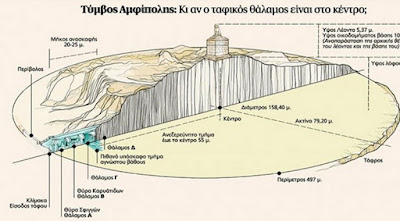The history of Early Modern Greece as seen from the perspectives of studies and overviews in English is one of the end of the period of Ottoman control, the revolt to free parts of the Greek-speaking lands, the creation of a new territorial state under foreign imposed monarchies, the bitter internal politics that led to adventurism and national bankruptcy and the slow expansion of the territory of the nation. This is mostly a history featuring prominent men, revolts, wars and international relations with an emphasis on the government in Athens. There is much more, however, that has been written in Greek concerning this formative period and many more ways to look at Greece in the “long 19th century” between 1798 and 1912.
On Wednesday, November 26th at 7:30 pm in the Institute’s Library Professor Athanasios Gekas, the Hellenic Heritage Chair in Modern Greek History in the Department of History at York University in Ontario will give a lecture entitled, “Vanished States. A Regional Approach to the History of the Greek State in the Long Nineteenth Century (1798-1912)”.
The recent controversy surrounding Greece has revived debates on the history of Greek state formation. In the past, historians and social scientists of Modern Greece suffered from the ‘backwardness syndrome’ - how ‘modern’ the Greek State was in comparison to European states - and placed too much emphasis on the ‘success’ of the nation-state after the revolution of 1821. The talk suggests that we think more broadly chronologically and conceptually to include various island states, now vanished, that formed and were gradually absorbed by the Greek Kingdom during the long nineteenth century: the Ionian State, the Principality of Samos and the Cretan Republic. A regional approach allows us to compare and contrast the various trajectories and regional histories of economies, institutions and identities and avoid a teleological and homogenizing approach to the formation of the Greek state. The history of these states explains the dependencies of modern Greece to colonial empires (British, French, Russian) and the Ottoman Empire during a period of escalating antagonisms in the Mediterranean and stresses continuities instead of presumed radical breaks by showing the role of empire on Greek state formation.
A more nuanced picture of how Greece came to have the characteristics it has today awaits you on Wednesday.
More Amphipolitics
Until last Friday night I had resolved not to comment further on the excavation of the Kasta tumulus at Amphipolis. When I saw, however, my colleague Prof. Maria Liston who is a physical anthropologist at the University of Waterloo interviewed via Skype on Alpha TV concerning what might be learned from the human skeletal remains that were found in/around the grave below the floor in the third, innermost chamber I knew it was a sign for a “final” review of the situation. Maria’s considered general observations were reinforced by Prof. Sevi Triantaphyllou’s comments in the Sunday edition of To Bima. Sevi is another experienced physical anthropologist who teaches at the Aristotelian University of Thessaloniki. She heads up the team excavating and studying the human skeletal remains from the cemetery at Petras. She also studied the skeletal remains from the Mycenaean cemetery at Ayia Sotira in the Peloponnesos excavated by a team from Brock University.
SKAI TV produced an animated 3D video of the tumulus and tomb (http://www.ekathimerini.com/4dcgi/_w_articles_wsite4_1_17/11/2014_544664) to assist in understanding what has been found. An imaginative presentation of what the burial assemblage of the presumed male might have looked like was published in the Saturday edition of Ta Nea. Unfortunately there is no evidence that I know of from the excavation which would support such a “reconstruction”. It looks like the Archaic-period warrior-burial assemblages from the Archontiko cemetery to the NW of Pella. An unfortunate consequence of the publication of these images is that there are people who think that this was in fact found in the tomb.
In essence, since what has been reported in the press releases from the Ministry of Culture and Sports and the accompanying images are very incomplete in regard to where exactly the bones were found and how complete was the skeleton, no one outside of the excavation’s physical anthropologist can say anything about the biological sex, height, age or physical condition of the deceased at death. All speculation as to whom this individual may have been related by using DNA analysis is very premature to say the least. This is especially true as no archaeological evidence has been presented so far to date the internment of the deceased. The skeleton could have occurred as a reuse of the tomb later than the actual construction of the tomb. This is another example of the rush to judgment in the Greek media concerning almost all aspects of this most unusual monument with little definitive information to go on. The numerous and frequent statements of certainty that have been presented about who was buried in the tomb, by whom and why, the date of its construction, whether it was unplundered or plundered (and, if so, how many times and when), as well as the potential meaning(s) for the modern Greek nation have dulled the collective senses.
There have been increasing critiques in the social media of this excavation and the methods used, on how and why information concerning the finds have been communicated as has been done so far and on the use of the “finds” to reinforce entrenched political views. There are personality clashes to add spice to this admixture. With all of the pressing issues relating to stewardship and protection of the country’s rich and varied cultural heritage and landscapes being pushed aside to promote touristic development projects, the ongoing, often melodramatic, spectacle called the Amphipolis excavation acts to divert public attention and discussion from what is important in the long term.
Cordially,
David Rupp
Director




No comments:
Post a Comment